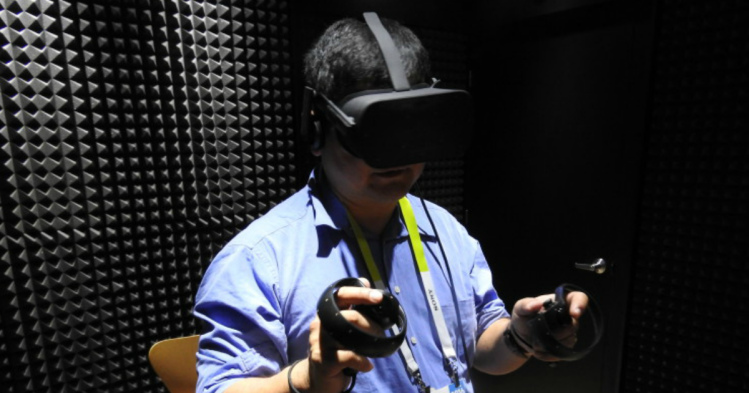Some scenarios are impossible to realistically recreate in training. A trainee surgeon can read all of the books he likes on medicine and observe other surgeons performing procedures, but neither will give him a true feel for what it’s like in the operating room.
Hazardous occupations are similarly difficult to simulate, with most current 2D simulators failing to give a feel of the surrounding atmosphere. This limitation presents a major obstacle for corporations involved in activities like resource extraction, and it goes some way to explaining the historically high fatality rates within such industries.
Now, however, technology is offering two new solutions: virtual and augmented reality.
The benefits of VR and AR training
These two technologies are often conflated, but there is a difference between them. While virtual reality creates a totally immersive simulation, augmented reality adds labels, captions, and other helpful overlays to a user’s view of his environment.
VR technology has proven a major boon to both the healthcare and resource extraction industries. Back in 2014, oil companies began using this technology to train oil rig workers. Where previously they had employed PowerPoint presentations to emphasize the importance of safety, corporations could now put their employees at the heart of proceedings. Healthcare has followed suit, and hospitals are using VR technology to guide practitioners through procedures like cardiopulmonary resuscitation and Foley catheter insertion.
In both of these industries, trainees can use VR to practice essential skills without placing lives at risk. By setting aside the manuals and information sheets, trainees also stand a better chance of retaining information. The importance of experiential learning has long been recognized in many professions, but now research suggests it helps with more abstract learning, too.
With users able to rewind training and progress at their own pace, VR and AR systems can also help combat our shrinking attention spans. So why hasn’t this technology been more widely adopted?
Current challenges
Cost has proven one of the chief impediments. VR devices currently cost upward of $3,000 per unit, but this situation is beginning to change as more providers enter the marketplace.
Facebook and Samsung recently partnered to deliver a VR system for consumers. Microsoft released its HoloLens, an AR device that can bring computer-aided design and computer-aided manufacturing diagrams to life to help engineers boost their productivity. And Google has announced a reboot of its AR Glass product, now renamed “Project Aura.” With the company also launching an inexpensive VR system — Google Cardboard — it’s clear the cost of VR and AR training will soon drop dramatically.
There are, however, other concerns. At present, many VR devices may leave users disoriented if used for more than an hour at a time. Developers are already working toward a solution, but enterprises should not be put off by the technology in the interim, as few sessions last long enough to cause “VR sickness.”
Of course, neither technology can provide a truly immersive experience, as they only affect two of our senses — sight and hearing — and thus, only give a limited idea of the surrounding environment. But should this be an obstacle? No.
Enterprise adoption
Resource extraction and healthcare are among the most tactile industries, and yet both have embraced this technology. Other industries are now following suit. Four NFL teams currently employ the technology to help analyze and improve their plays, as well as to simulate those of their opponents.
General Motors is another early adopter, using Google Glass to train factory workers in real time and provide immediate feedback, with users seeing the correct techniques in their Google gadget as they perform tasks. Training is being redefined as people begin to perform complex operations in the field with AR technology creating additional contextual information and operating procedures.
In Germany, Deutsche Bahn AG uses VR technology to aid in recruitment. Prospective employees are given the chance to experience the job before they apply, helping to give the company an edge in a competitive market. The company also believes virtual reality will help older employees by giving them a taste of the workplace of the future, and thus better prepare them for new challenges.
And in Australia, AGL Energy Limited sees a number of possibilities for VR technology. The company uses it to give new workers a taste of life at the company as well as to provide office learning and development and on-site safety lessons.
With such a broad range of employee-training applications, it’s clear that both VR and AR technology will be important to the corporate enterprise of the future. The technology is swiftly becoming more economical than traditional mechanisms, and it is already much more realistic. Innovative companies looking to gain a competitive edge would do well to get in ahead of their rivals by making the transition to VR and AR training.
K.R. Sanjiv is chief technology officer for Wipro, a global information technology, consulting, and outsourcing company. He has more than 25 years of enterprise IT experience, including consulting, application development, and technology development spanning multiple industry segments and technology areas.


